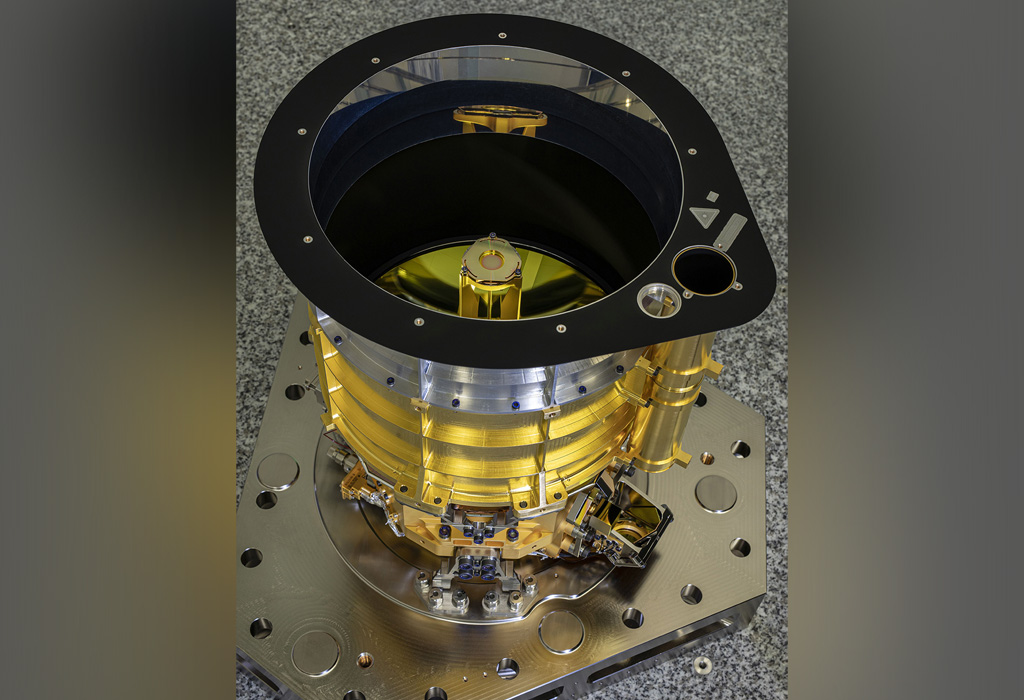Ganymede Laser Altimeter GALA
The ‘Ganymede Laser Altimeter’ (GALA) is one of 10 instruments on board ESA’s Jupiter Icy moons Explorer (JUICE) mission, which will study Jupiter’s three large icy moons – Ganymede, Europa and Callisto. The primary target of the mission is Ganymede, which the JUICE spacecraft will orbit and explore in detail for several months. The mission is scheduled to launch in 2023 and arrive in the Jupiter system in 2032. Together with the other instruments, GALA will determine the composition and thickness of the moon’s ice layer as well as address the question of whether Ganymede contains a subsurface water ocean underneath its icy crust.
GALA will measure the deformation of Ganymede’s ice crust and its shape. In addition, a comprehensive map of the entire regional and local topography will be created. This will help to understand the processes that shaped the natural satellite. Furthermore, the tidal deformation, the rising and falling of the ice crust, will be analysed based on measurements taken at different times during Ganymede’s seven-day orbit around Jupiter. Based on these elevation measurements, it should be possible to demonstrate the existence of an interior ocean and determine the mechanical properties of the overlying ice layer.
GALA consists of two electronic units and an optical part, which contains the laser and the telescope for the receiver. Laser pulses in the near infrared are sent 30 to 50 times per second from a height of 500 kilometres to the surface of Ganymede to make altitude measurements. A highly sensitive detector then records the reflected pulses. Because GALA can measure the time of flight with an accuracy of less than a nanosecond, the position and alignment of the probe can be determined with great certainty, and Ganymede’s surface can thus be scanned at a very high optical resolution. The data will be used to produce a global elevation model.
The GALA laser altimeter was developed in a cooperation between DLR, JAXA, the University of Bern and the Spanish institute IAA-CSIC, as well as the industrial partners HENSOLDT Optronics GmbH (Germany), Meisei (Japan), Thales Alenia (Switzerland) and Sener (Spain).
Link:
German Aerospace Center (DLR)
Institute of Planetary Research
Dr. Hauke Hußmann · Email hauke.hussmann@dlr.de
